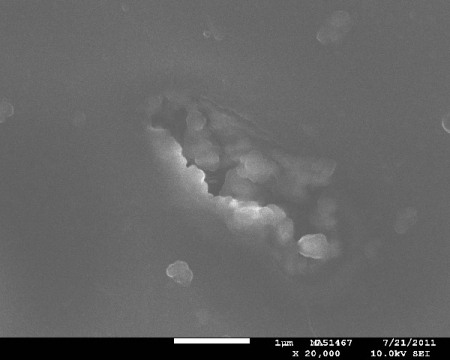A nanoscale analysis conducted by McCrone Associates using field emission scanning electron microscopy has provided the visual evidence for patient-reported hypersensitivity advantages of Clinpro toothpaste, a product of 3M ESPE.
 High magnification field emission scanning electron microscopy image of dentin treated with Clinpro 5000 after acid challenge. Mineral deposits visibly block the tubules.
High magnification field emission scanning electron microscopy image of dentin treated with Clinpro 5000 after acid challenge. Mineral deposits visibly block the tubules.
The Chief Executive Officer at Indiana Nanotech, Robert Karlinsey reported the findings in American Journal of Dentistry’s December 2011 issue. Karlinsey found that Clinpro toothpaste, which comprises a fluoride-compatible tricalcium phosphate system developed by him, demonstrated high effectiveness at filling the tubules when compared to four other major brands. Pain of sensitive teeth can be relieved by effectively filling the tubules of the dentin that connect to the nerves.
With the help of field emission scanning electron microscopy, McCrone Associates’ Senior Research Scientist, Craig Schwandt, who is also the co-author of the paper reported in American Journal of Dentistry, performed the nanoscale analysis of demineralized dentin treated with different toothpastes in order to identify the possibility of mineral deposit formation by Clinpro in the tubules.
Schwandt demonstrated that Clinpro products encouraged the formation of mineral deposits in the tubules of the dentin. The deposits also demonstrated acid resistance. The microscopic study also showed that other toothpastes were able to demonstrate only moderate abilities to fill the tubules and their deposits were not acid resistant. According to Schwandt, field emission scanning electron microscopy is a simple and fast method to perform nanoscale study on samples.